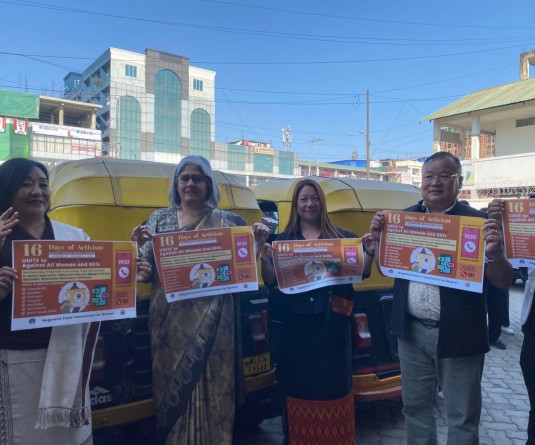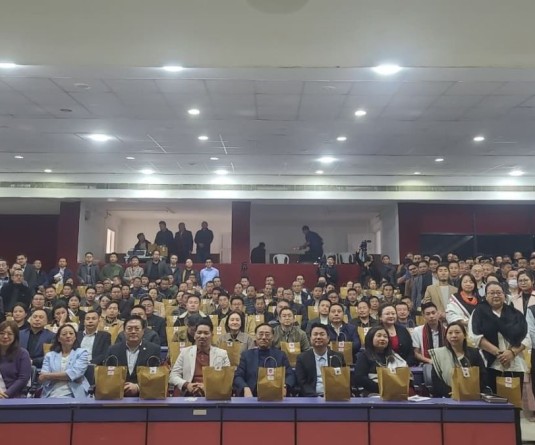
KOHIMA, JUNE 10 (NEPS): Secretary for Land Recourses Department, Y Kikheto Sema, today said the communitization program implemented in Nagaland since 2002 was “unique” and the very idea of the program was not only sharing responsibilities of government institutions but also instilling a sense of belongingness to all sections of people.
Delivering lecture on the ‘communitization in Nagaland’ during the Common Induction Programs of IAS, IPS, NCS, NPS and Allied Services Probationers of 2014 batch here at ATI Conference Hall on Friday, the Secretary narrated as to how the “unique” concept of the communitization came into being in Nagaland.
He said the concept of communitization introduced in Nagaland by former Nagaland Chief Secretary, RS Pandey was an attempt towards devolution of powers for managing the institutions to the community.
Kikheto Sema, who was part of the team while framing the communitization program in the State, said they had to evolve a triple ‘T’ concept - Trust the user community; Train the user community on discharging newfound responsibilities and Transfer of Government powers & recourses.
He also disclosed that communitization sought to revive the strong socio-capital base of the Naga society, with its values and principles, traditional and age-old legacies, such as the Morung system of education,” he said.
He said as soon as the Nagaland Communitization of Public Institutions & Services Acts, 2002 came in, the Nagaland Communitisation of Elementary Education Institution and Services Rule 2002 was notified on March 28, 2002. He further explained as to why the Government had to implement communitization of Elementary education in the State. He said Elementary Education consisted of 87% of the total education sector, besides 90% of the government schools were in rural areas. Funds also hardly reached the grassroots level, while salaries were not disbursed in time not to forget about illegal deduction on salaries, etc.
On top of this, there were other issues like poor infrastructures, no attraction of students, high rate of dropouts, many untrained teachers and poor attendance of teachers, poor results and pass percentage and no sense of belongingness.
With all these things in mind, the government targeted elementary education in the State to be communitised under the Communitisation Scheme. So in order to effectively implement Communitisation Elementary Education, they constituted the Village Education Committee (VEC) to run the affairs institutions.
Kikheto Sema disclosed that three years after the implementation of communitisation of education in Nagaland there was a marked improvement in the education sectors. Several VECs were able to improve the management of their schools by utilizing the honorary services of retired or serving educationists hailing from their villages. They could also identify a good number of bogus teachers and weed them out, he claimed.
He however regretted that the communisation policy was becoming slower these days and urged the probationers to step in for revival.
“If communitisation is implemented in letter and spirit, we could have requested the Government of India to modify some of the flagship programs due to its practical difficulties in its implementation, wherein communitization program could have solved for a better delivery system,” he added.






